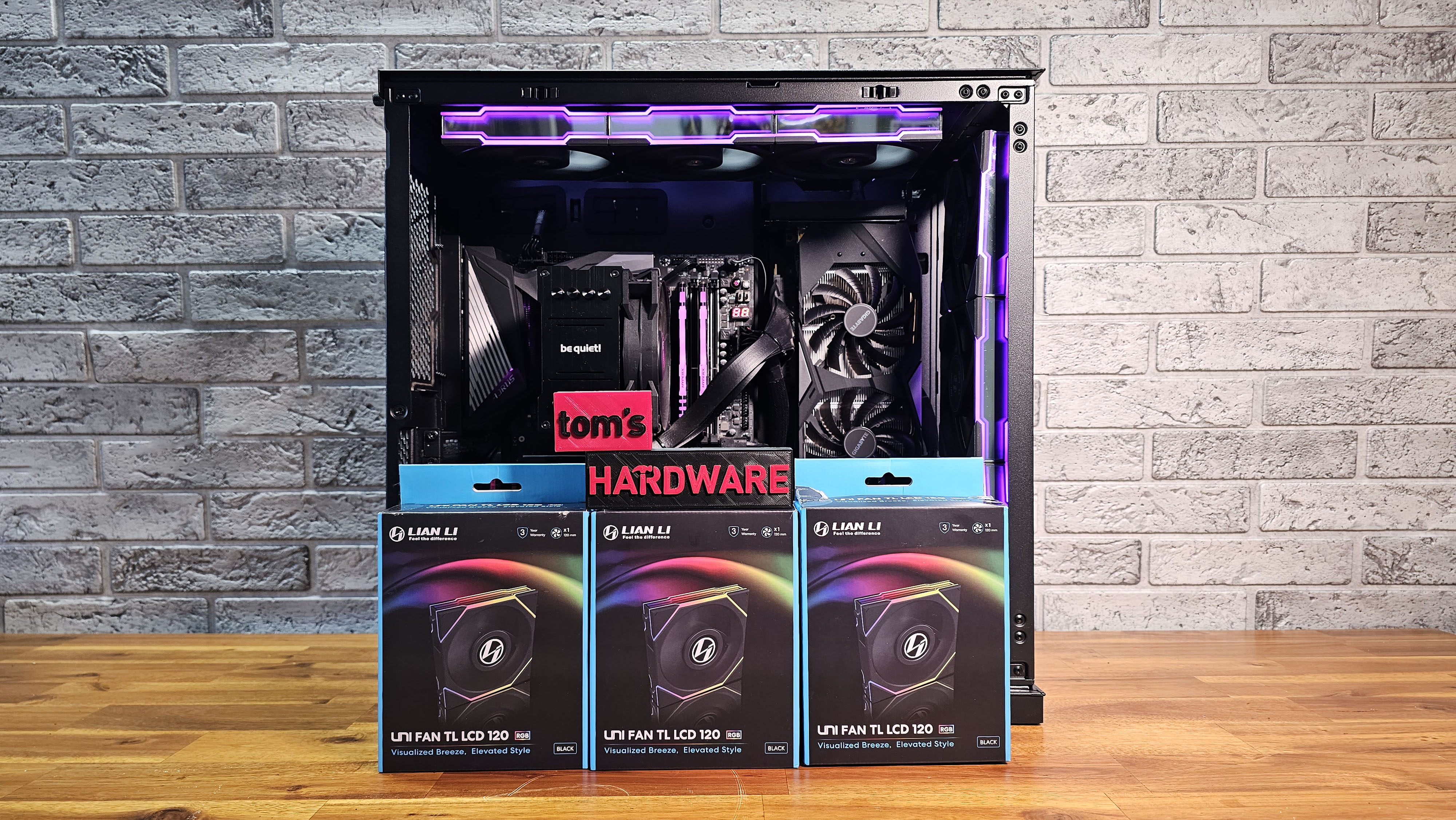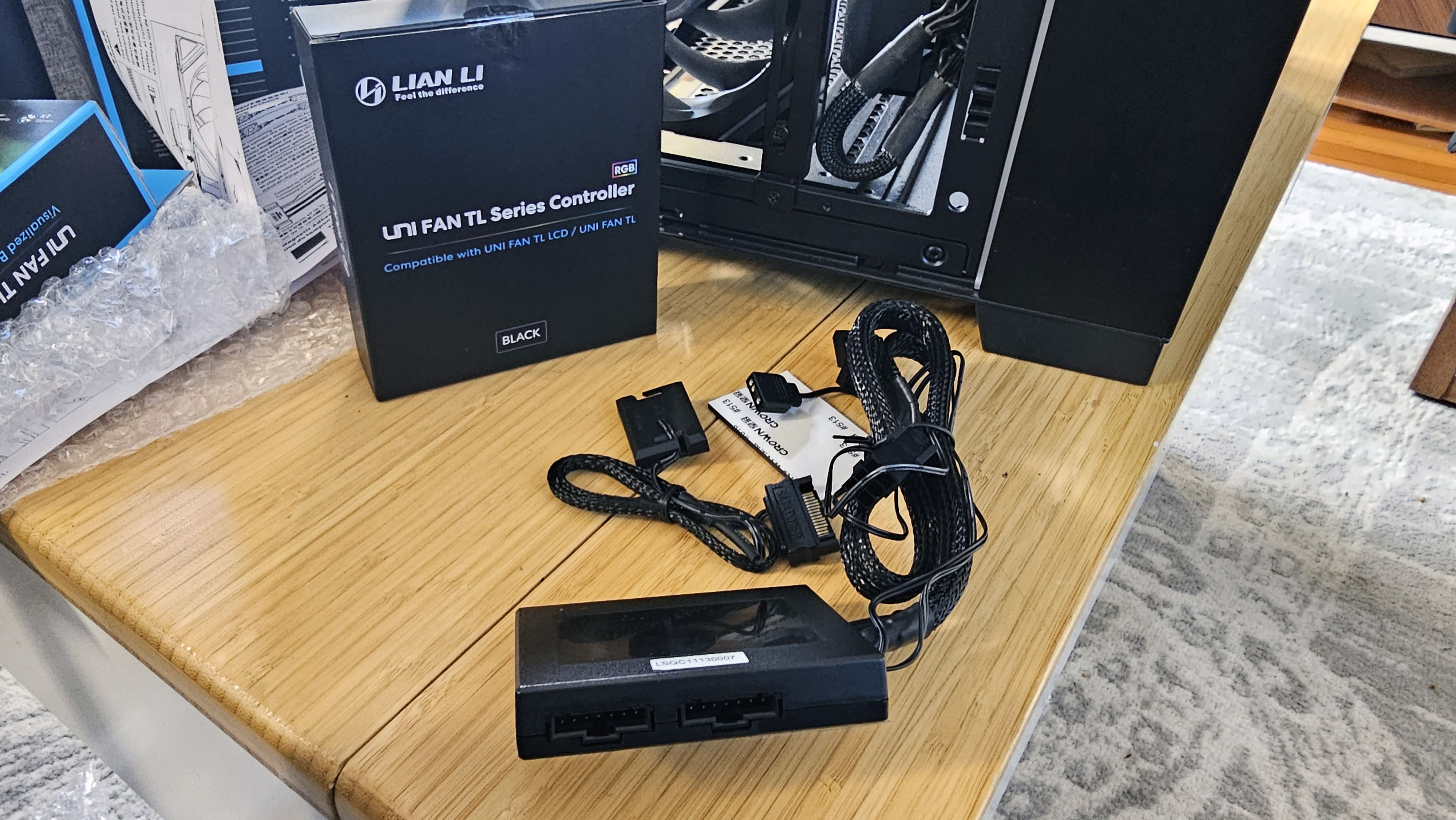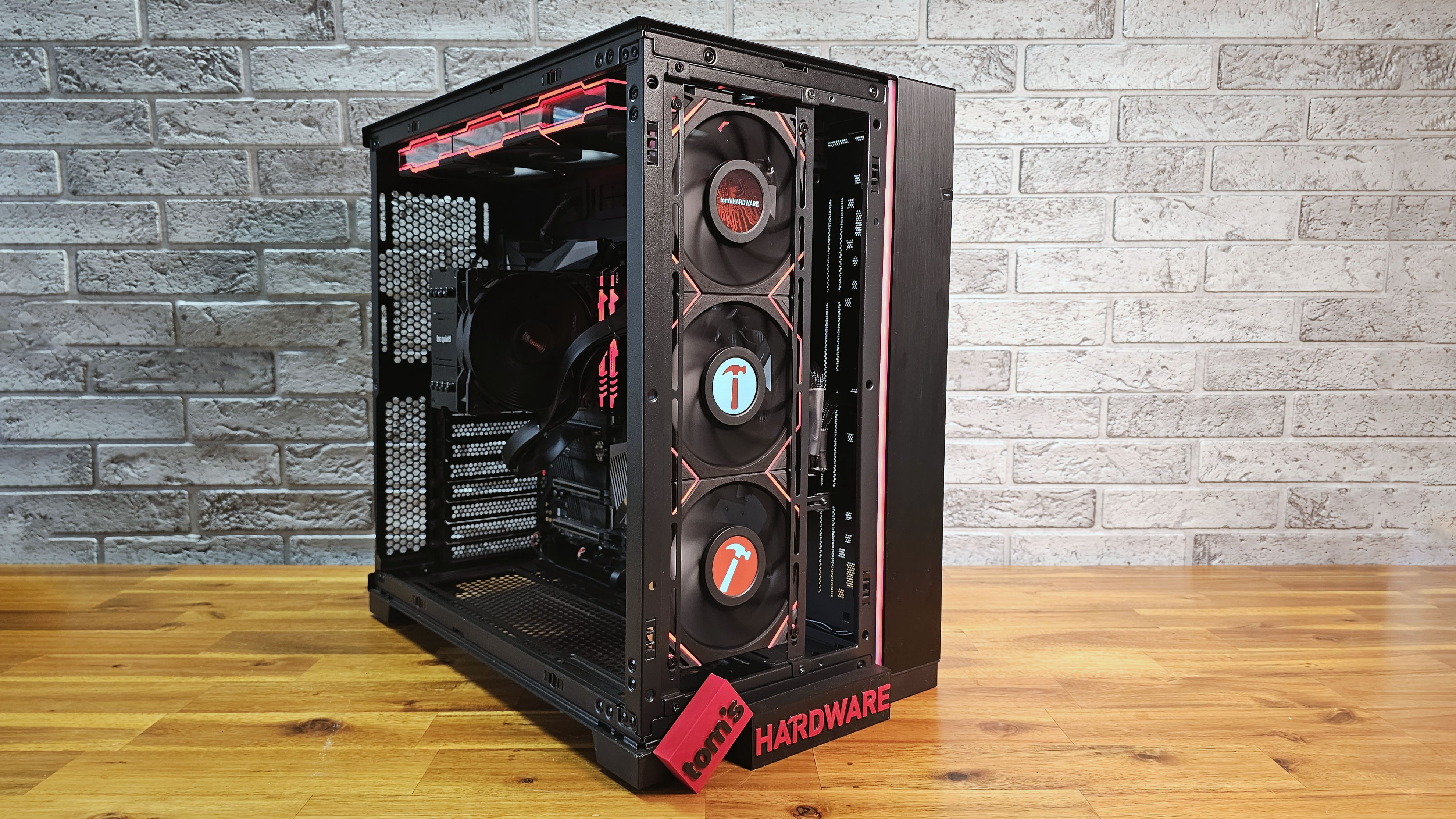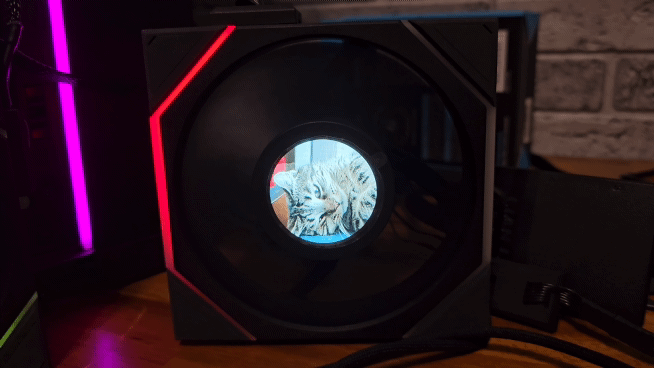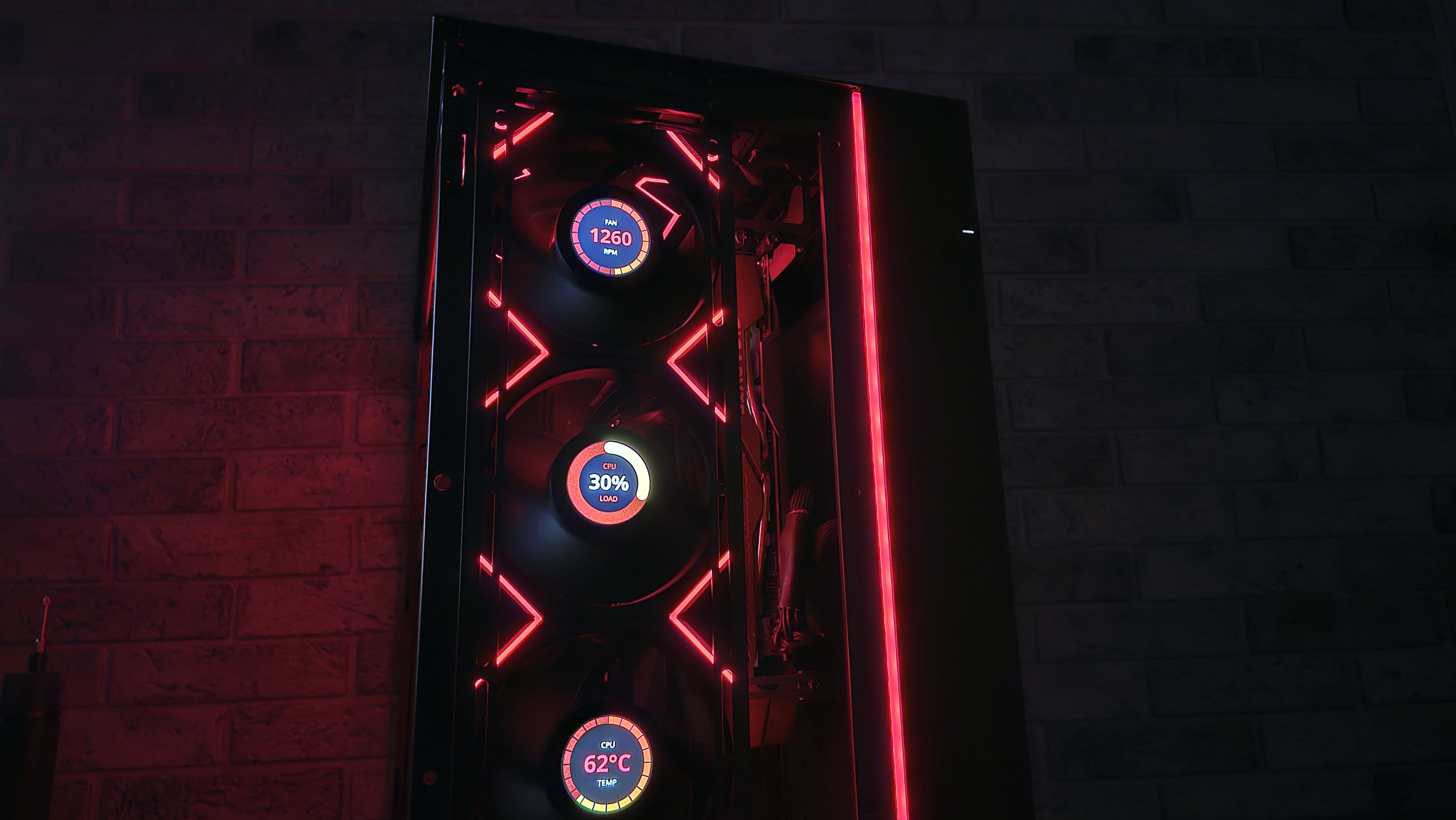Hands-On: Lian Li's LCD Screen fans turn heads and are surprisingly affordable, but not as configurable as I'd like
You can't mix LCD and non-LCD Uni Fans in the same connection chain.
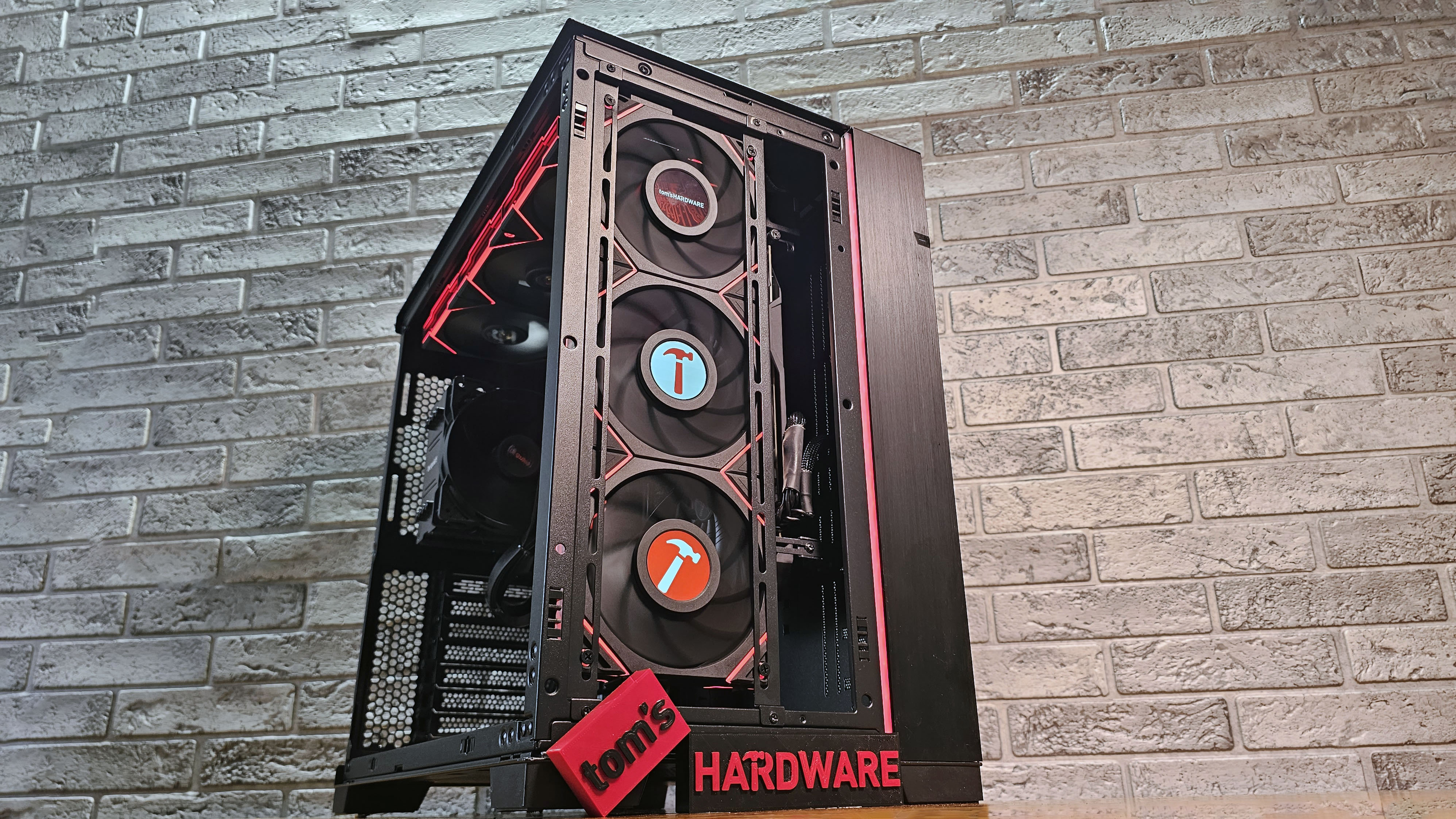
When I started building PCs, the only way to change the look of a fan was to buy a custom fan grille. So I was intrigued when I first saw Lian Li's Uni Fan TL LCD fans at Computex earlier this year, with their embedded, customizable screens, even though the viewing angles on those early units were pretty bad. Now that I've spent some time with the final units, which should be available now alongside a version without screens, I can say that they've fixed the viewing angle issues. Images, gifs, and movies displayed on the 1.6-inch, 400x400-pixel screens are bright and vivid. And while I wouldn't rely solely on these spinners to cool your highly overclocked high-end gaming rig, they do a decent enough job of moving air through your PC.
But I also ran into some frustrating issues while installing and setting up the fans in a Lian Li O11 Evo case. For starters, the display lives on one side of the fan, which is fine if you want the fan's screen on the outside of the front of the case as an intake, or the inside of the case for exhaust. But if you want to, say, mount some fans as intake and be able to see the screens through the glass side panel of your case as opposed to at the front, you'll have to buy reverse models (which Lian Li also offers) with the screen on the opposite side. That's not a huge deal, but it requires some planning before you buy. And if you buy a three-pack with the required controller hub, you're going to get three with the screens facing the same way.
Worse – and this one is the major frustration for me – is that while Lian Li offers its new TL fans in LCD and non-LCD models, you cannot mix LCD and non-LCD fans in the same chain going to the controller box. These are daisy-chained fans that connect to each other and then connect via one proprietary cable to the controller box. So there is no way, for instance, to have three TL fans in the front of your case where the one in the middle has an LCD screen and the others don't. I suppose you could technically achieve this by having the fans separated slightly and running three distinct cables to the controller box, but that defeats the whole purpose of the Uni Fan design and also would leave you with just one port free to connect more fans to the controller box. It also probably wouldn't look very good with visible gaps between the fans.
| Black / White | Dimensions | Fan Speed | Warranty | Single Pack | Header Cell - Column 5 | Triple Pack (With controller) |
|---|---|---|---|---|---|---|
| TL 120 | 120x125x28mm | 0, 350-1900 RPM | 3 Years | $32.99 | Row 0 - Cell 5 | $109.99 |
| TL 120 Reverse | Row 1 - Cell 1 | 0, 350-1900 RPM | 3 Years | $32.99 | Row 1 - Cell 5 | $109.99 |
| TL 140 | 140x145x28mm | 0,400-1600 RPM | 3 Years | $35.99 | Row 2 - Cell 5 | - |
| TL 140 Reverse White | 140x145x28mm | 0,400-1600 RPM | 3 Years | $35.99 | Row 3 - Cell 5 | - |
| TL LCD 120 | 120x125x28mm | 0, 350-1900 RPM | 3 Years | $46.99 | Row 4 - Cell 5 | $149.99 |
| TL LCD 120 Reverse | 120x125x28mm | 0, 350-1900 RPM | 3 Years | $46.99 | Row 5 - Cell 5 | $149.99 |
| TL LCD 140 | 140x145x28mm | 0, 350-1900 RPM | 3 Years | $51.99 | Row 6 - Cell 5 | - |
| TL LCD 140 Reverse White | 140x145x28mm | 0,400-1600 RPM | 3 Years | $51.99 | Row 7 - Cell 5 | - |
The Uni Fan TLs will come in black and white and will be available in 120mm and 140mm sizes. They are a bit thicker than standard 25mm fans, but 28mm is in line with other premium / performance-oriented fans.

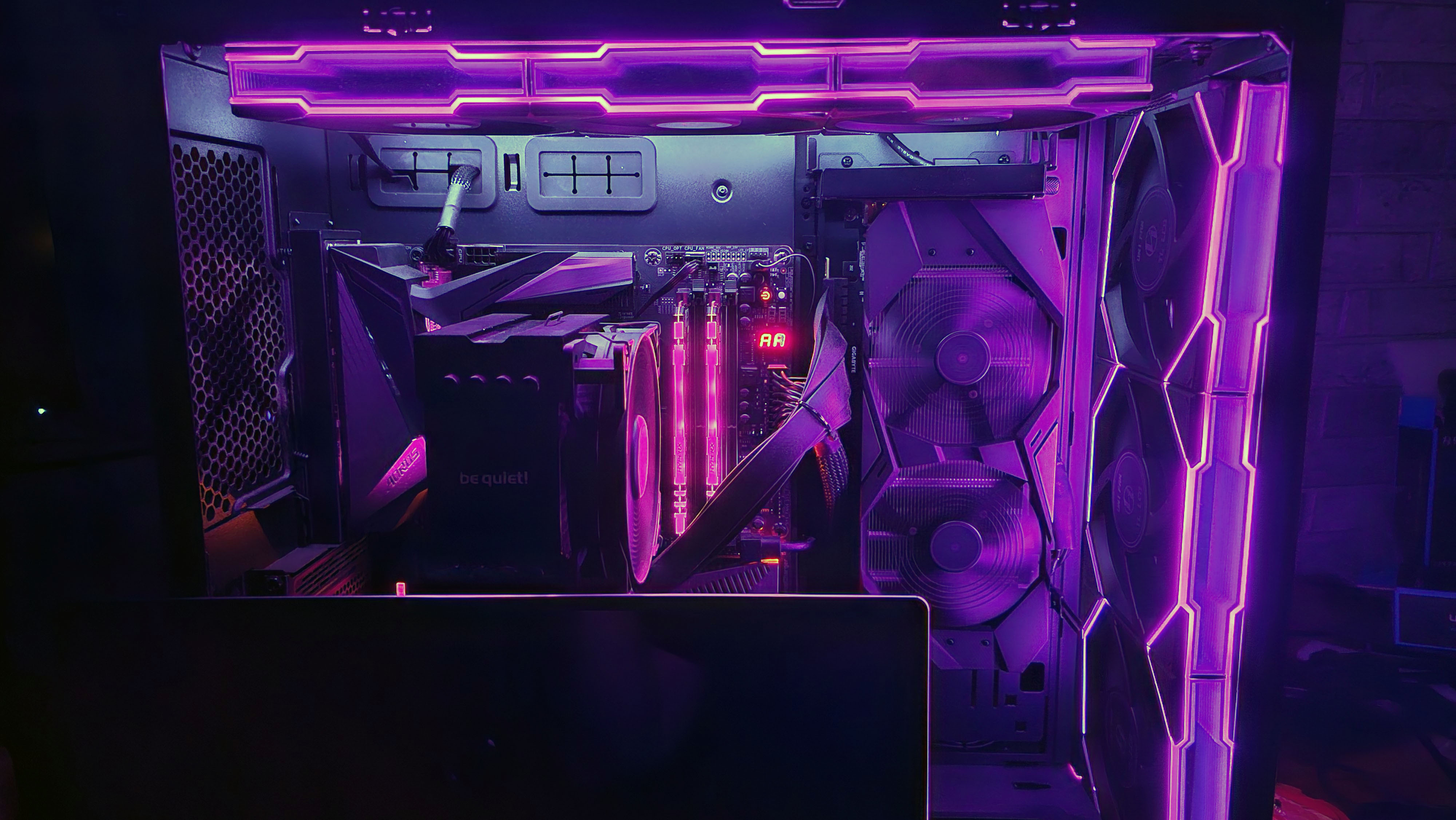
Both the LCD and non-LCD Uni Fan TLs also have RGB-lit infinity mirrors around their edges, and various lighting options in the company's L-Connect 3 software let you cascade colors along the edges of the fans. There are also light strips around either side of the front of the fans. If you like RGB, there is plenty of that here, though perhaps not quite as much glow as you might get from traditional RGB fans.
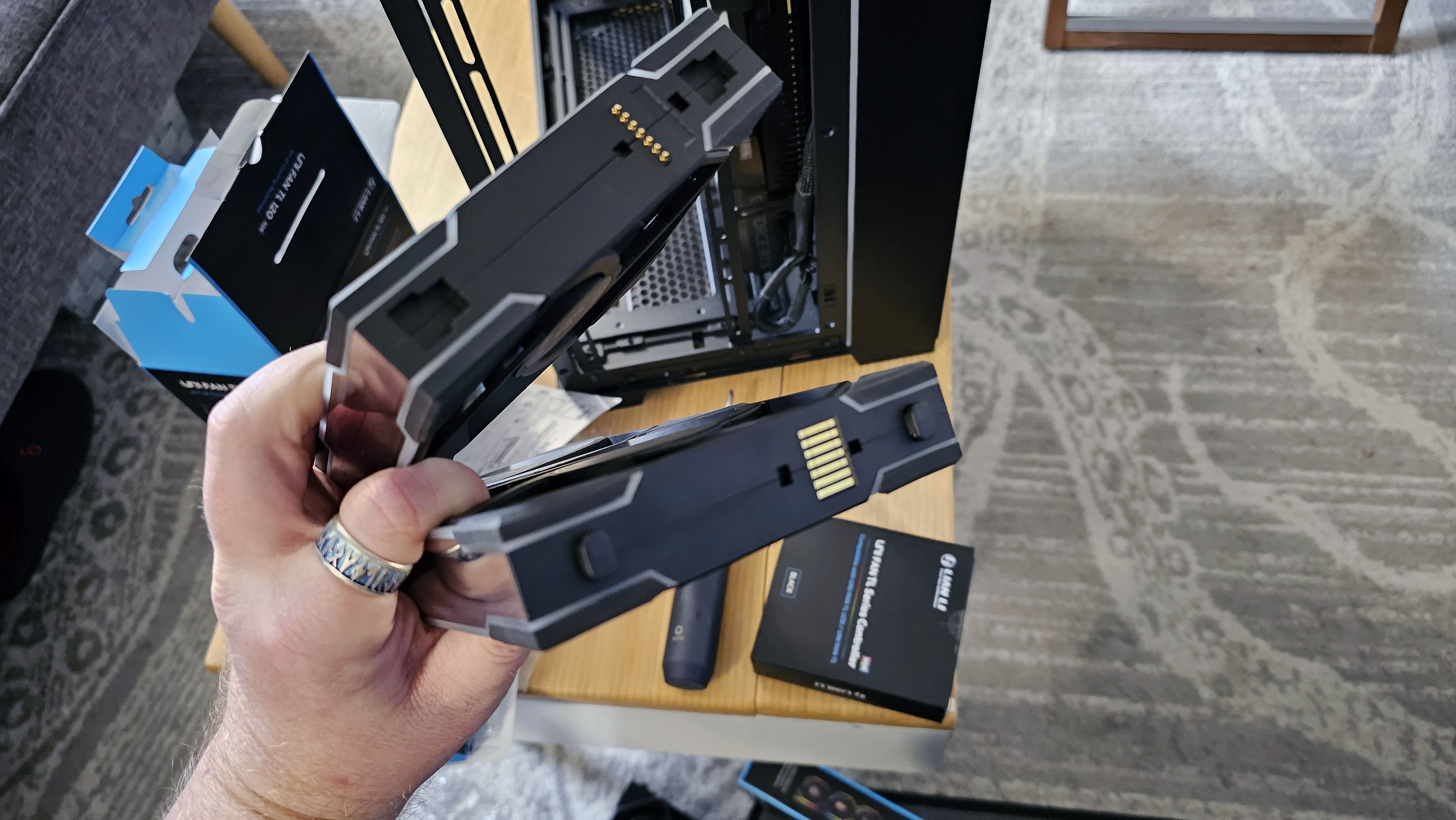
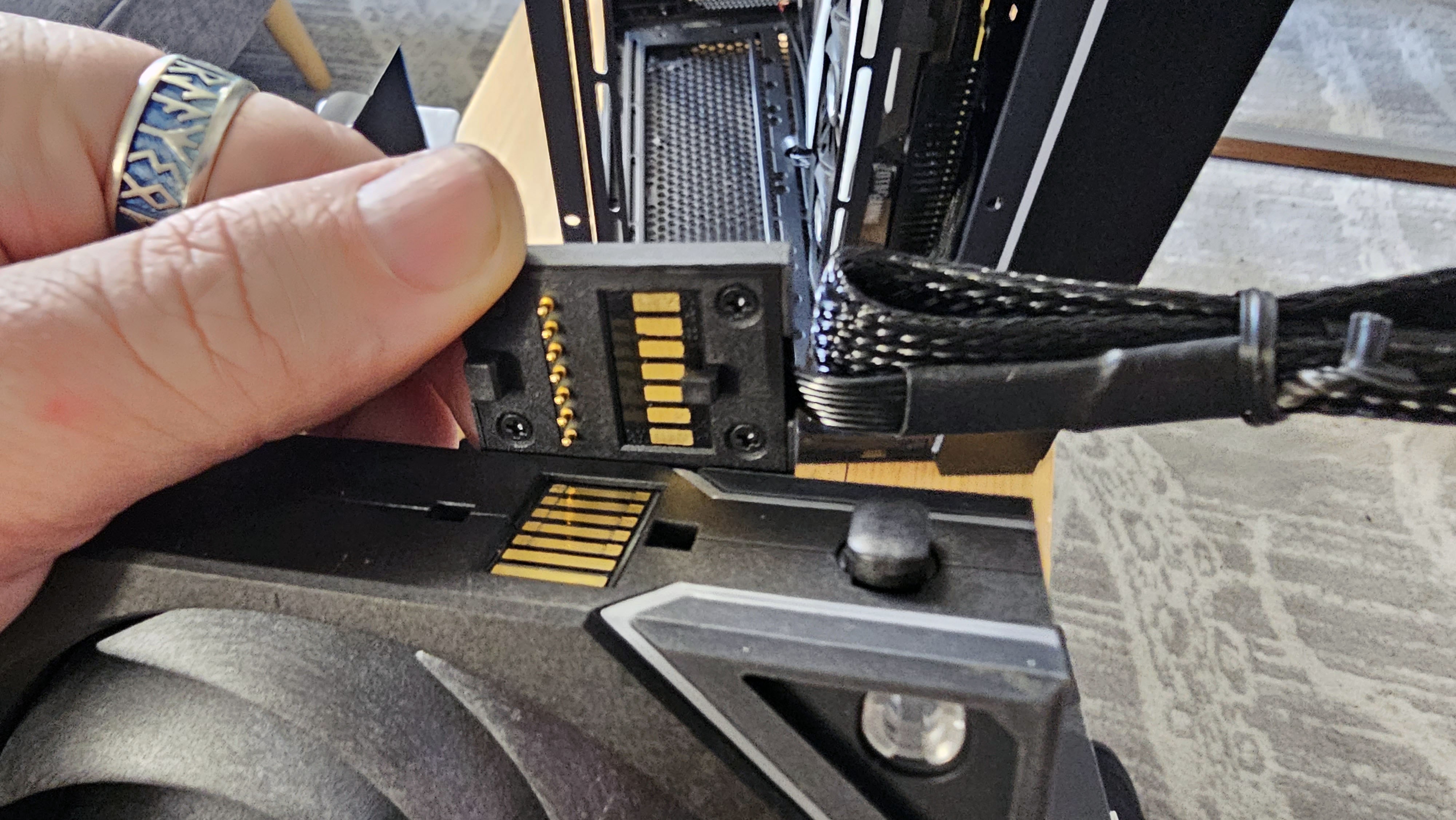
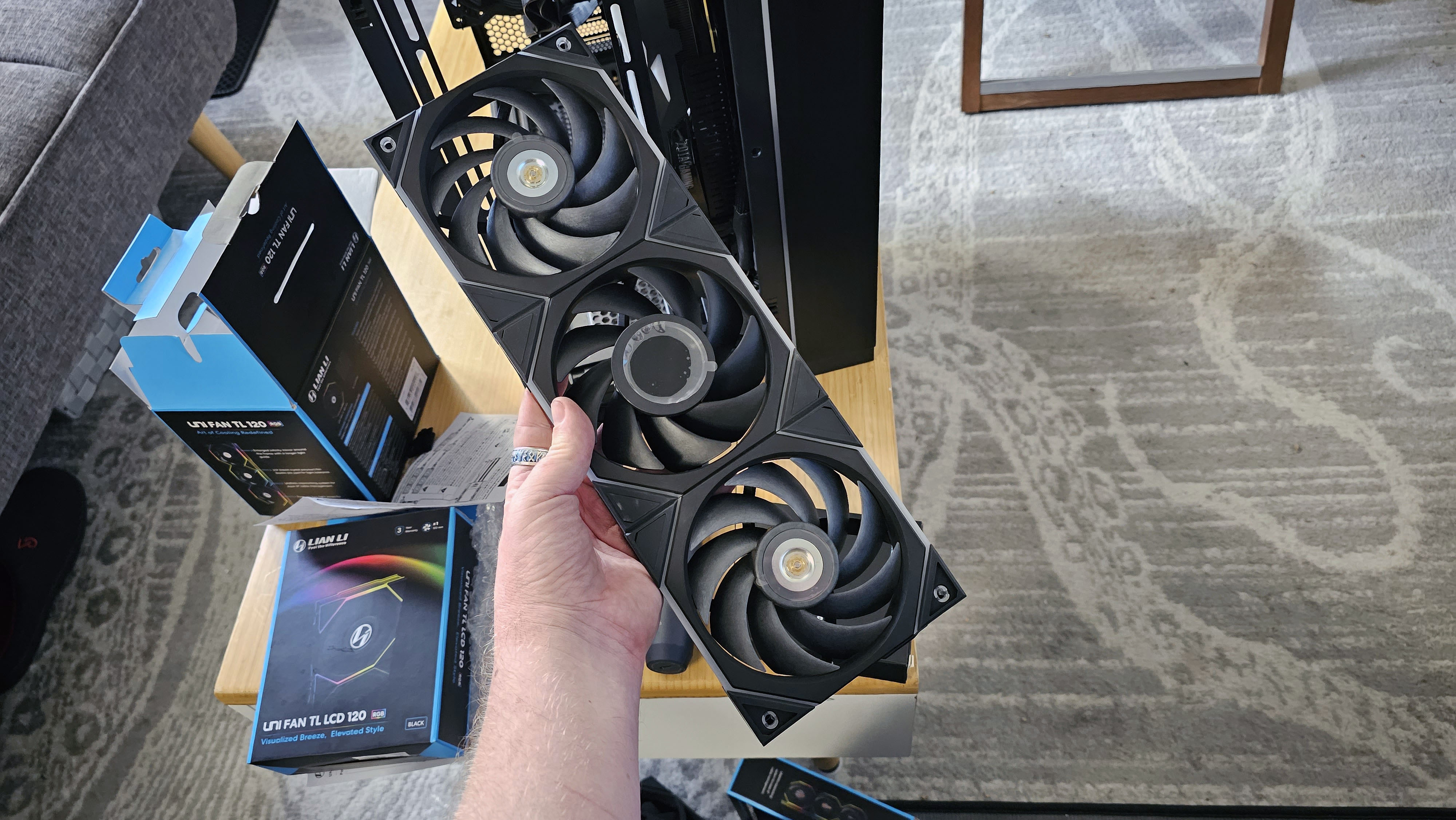
As with the previous Uni Fan SL fans, the TL fans connect and clip to one another via pogo pins and ball and socket joints. You'll have to line up a pogo pin edge with an edge on another fan that just has the metal pads (without pins), then you just put the ball connectors of one fan into the sockets in the other and slide the top fan to the right to lock it in. Compared to traditional case fans, this is super easy, especially when you consider you then just have to connect one of Lian Li's Uni Fan cables (which also installs by clicking in and sliding to the right) to one fan, and run that to the controller box. This massively cuts down on the number of wires you have to route and hide, especially if you're installing several case fans.
But, this leads me to the other annoyance: The controller box for the Lian Li Uni Fans still needs to connect to a three-pin RGB header and a USB 2.0 header on your motherboard and, get this, a six-pin PCIe connector is required for power. I appreciate the controller box probably needs a lot of power considering you can have up to six LCD fans or 10 non-LCD fans connected to the four ports on the controller box (Lian Li says three LCD fans max per port). But in today's world of power-gobbling GPUs and 12VHPWR connectors, there often aren't many (or any) spare six-pin power connectors to go around. And apparently the PCIe power connector isn't always enough, as the company also supplies a SATA power cable that Lian Li says you should use for the sake of stability at the end of long fan chains. In order to install these fans in my existing build, I had to step down to a lower-end graphics card to free up a PCIe power plug. Otherwise, I would have had to install a different power supply.
Lian Li sent three of its LCD Uni Fans and three standard (non-LCD) Uni Fans for testing. As I noted up top, I had originally intended to install one of the LCD fans in the front, sandwiched between two non-LCD fans, and a second LCD fan in the rear of the case for exhaust and monitoring temperatures (as you can see in one of the photos above with the three fans linked together). I set it up that way originally, and the rear fan refused to work. In fact, no other fans I plugged into any of the other ports would work. Turns out, as I discovered, you can't mix fan types in the same chain.
So instead, I installed the three TL LCD fans up front and the three TL fans up top as exhaust, strictly for the purposes of demonstrating these fans. At least in this setup, with one cable running from the top fan to the controller box and another running from the top-rear fan to the controller box, all six fans lit up and otherwise functioned as expected.
Get Tom's Hardware's best news and in-depth reviews, straight to your inbox.
Using Lian Li's L-Connect 3 software
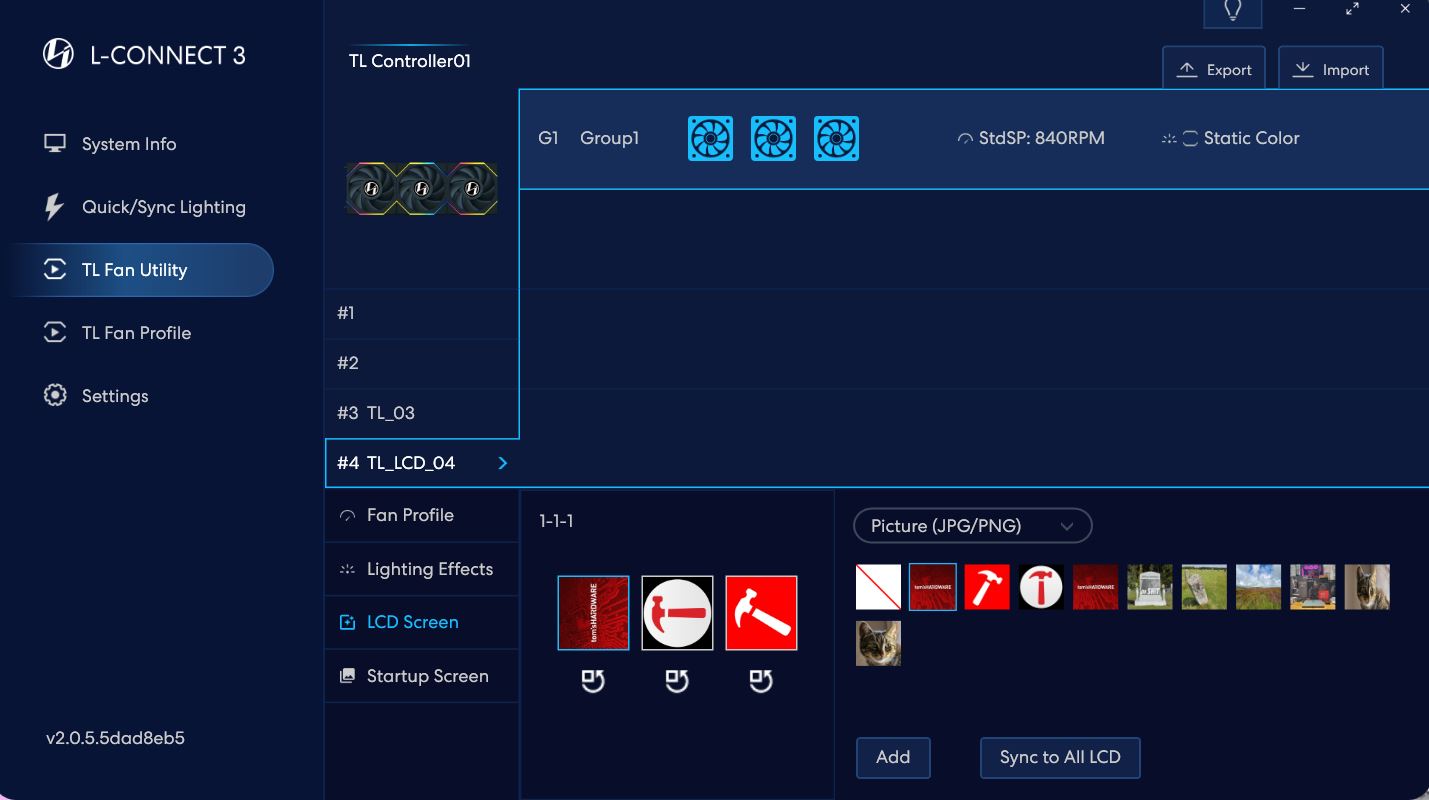
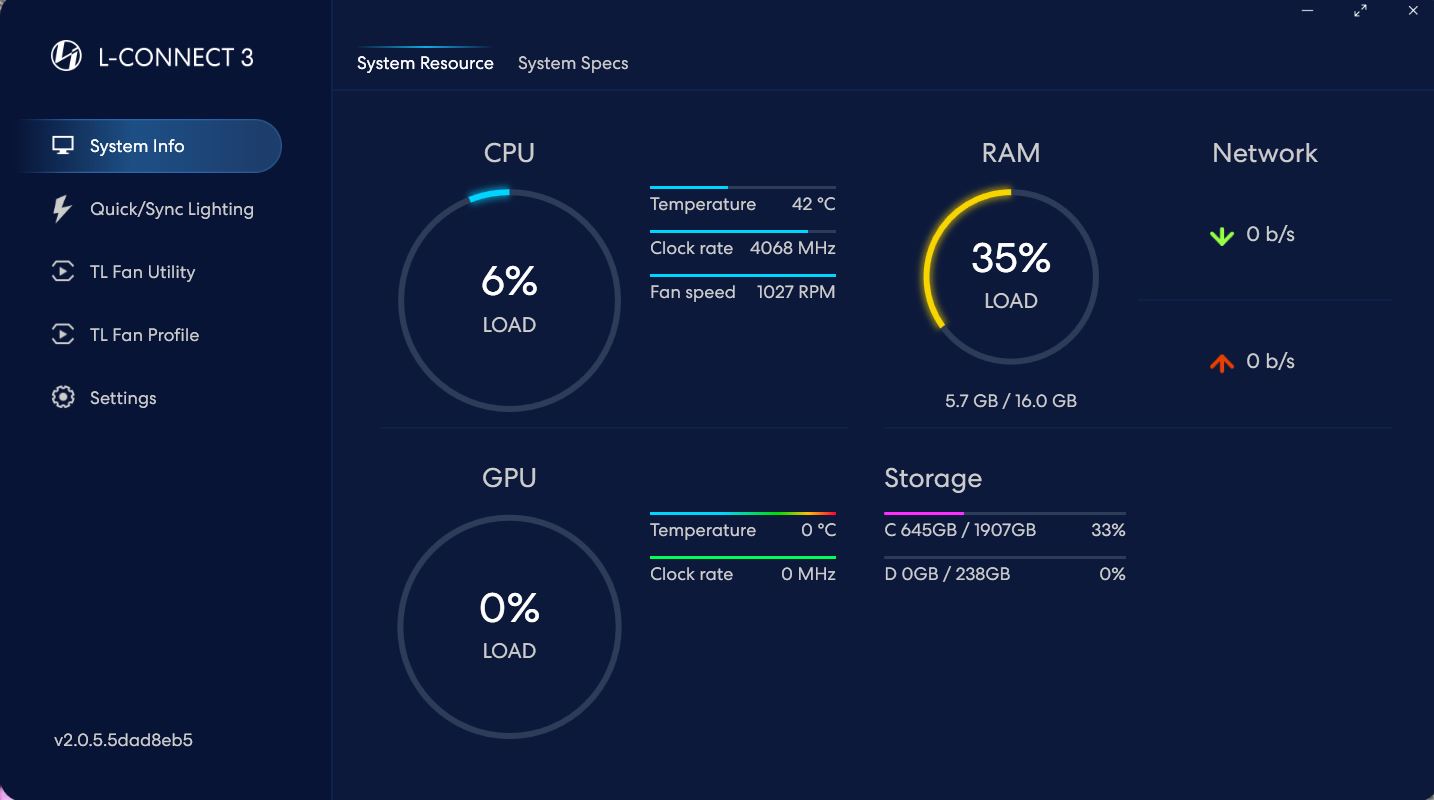
Of course, with any RGB cooling product, and especially one with customizable screens, you're going to have to deal with some kind of control software. I found Lian Li's L-Connect 3 software pleasingly intuitive, even if the design is a bit utilitarian. There are also at least a couple of bugs that need fixing, which I'll touch on shortly.
You can use the software to monitor system settings and adjust fan speed and profiles. But since I'm focusing on the LCD fans here, I'll stick mostly to the screen and RGB settings. The latter features the usual options like static color, meteor, rainbow, and stack (14 options total), and it all looks good as the colors move along the edge of the fans inside your case.
You can also add photos (JPG or PNG), GIFs, or video (MP4) to the LCD fans, and doing so is as simple as selecting a type from a drop-down and navigating to your desired file and then selecting and applying it, either to one LCD fan or all of them. Then you can rotate it via a button below the preview screen until it's in the correct orientation.
Every GIF, image and MP4 video I added to the fans displayed or played back pretty much as I expected, although you will want to crop things, because the 400 x 400-pixel fan display has a 1:1 ratio. The 16:9 videos of Scotland that I added to the TL LCD fans were very squished. Interestingly, the software actually seems to transcode videos as you select them, as it takes several seconds for long / large videos to load once you select them, and the CPU use spikes to 100% during that time.
Aside from squishing the aspect ratio down to 1:1, the videos I tried did otherwise play back flawlessly. I wouldn't recommend trying to watch a movie on a fan screen, though. Apart from the circular shape, tiny size, and sub-HD resolution, there are no media controls – the videos just loop. I did, though, at one point have three separate videos playing on the three fan screens on the front of the case at once. As is often our mantra here at Tom's Hardware, I did this to see if it could be done, not because it should be done.
Realistically, after the novelty wears off, many will want to use the TL LCD fans to monitor system stats and temps. To do that, you can choose Sensor from the LCD drop-down menu in L-Connect 3, and you'll see options for CPU and GPU temperature and load, as well as fan RPM. You can choose the color of various aspects of your status display (things like background, graphics, and text), as well as from three different styles.
Oddly, though, every time I chose the third style option, the screen defaulted to all white, and no amount of choosing different colors changed the white screen. It's as if the third style has just been left blank by the programmers. Hopefully, this will be fixed in an L-Connect 3 software update soon.
But a bigger issue needs fixing first: Multiple times after rebooting my system, whatever I had displayed on the fan's LCD screens before shutting down would load in the wrong orientation, 90 degrees counter-clockwise from the way I had set the displays. This happened both with videos and the sensor screens. Fixing it is as easy as firing up L-Connect 3 and re-rotating the screens, but obviously this isn't something people are going to want to do every time they shut down or install an update.
I suspect this issue may get fixed very quickly, but it, like the blank third sensor screen style, should have been fixed before the fans had a chance to get to reviewers or customers. For what it's worth, I found the rest of the L-Connect 3 software to be stable, intuitive, and quite functional. So I'm hopeful Lian Li will sort these issues out before long.
Conclusion
Much like Lian Li's Strimer RGB power extension cables, the TL LCD Uni Fans are going to be a polarizing case accessory. For those who only care about performance, there are, no doubt, screenless fans that will offer better airflow for less money, letting you put that budget toward a better GPU or a roomier, speedier SSD. But for those who like pretty lights and want to truly be able to customize the look of their PC – or monitor important stats at a glance without taking up precious monitor space, the TL LCD fans offer up something different while still doing a decent job of cooling your case's interior. They also aren't particularly loud, although I didn't do any temperature or cooling testing. If you buy these, you're buying them for aesthetics, not because they're going to outperform your Noctua or Be Quiet Fans.
You will, though, have to pay for the looks and versatility that the TL LCD fans bring. A three-pack and the controller box is expected to cost $150. In some ways, that's not a massive outlay considering the non-LCD version of the TL fans is priced at $110 for the same three-pack and controller bundle. Heck, Corsair's iCue Link fans are $160 for a three-pack plus controller – and they don't have screens at all. So as premium fans go, the Uni Fan TL spinners are spendy, but not the most expensive.
I also like that single packs of the TL LCD fans can be picked up for a surprisingly reasonable $47. So you could get yourself three non-LCD Uni Fans and pick up a couple extra LCD fans for just over $200. Just remember that you can't connect the LCD and non-LCD Uni Fans together, which is really a shame. And be sure to plan which side of the fan you want your screen to show up on (standard for an intake with the screen facing outside the case or an exhaust with the screen facing inside, or reverse for… the reverse of that). Because while not everyone will want to outfit their PC with LCD fans, no one wants to spend a lot of money for fans with screens, only to have those screens to be hidden because they're facing the wrong direction.
After a rough start with the Mattel Aquarius as a child, Matt built his first PC in the late 1990s and ventured into mild PC modding in the early 2000s. He’s spent the last 15 years covering emerging technology for Smithsonian, Popular Science, and Consumer Reports, while testing components and PCs for Computer Shopper, PCMag and Digital Trends.
-
court655 I'll be sticking with my Arctic PWM PST fans. Could get a pack of 5 for just the cost of one of those and they perform excellently.Reply -
kamehaiku I'll be sticking with noctua nf-a12x25. No frills, just performance. These are sold to sheep who need rgb and now more screens.Reply -
kamehaiku Reply
More things to go wrong for a bit of eye candy. Not worth it.g-unit1111 said:LCD screens are the new RGB? No thanks. -
Tonet666 Reply
Yeap, bought from their website AIO CCL Liquid Freezer II 240. Already have 6 120 PWM PST installed on me case. They are silent as a mouse in church. :LOL:court655 said:I'll be sticking with my Arctic PWM PST fans. Could get a pack of 5 for just the cost of one of those and they perform excellently.
No RGB or other lights. Only the one one the mobo and GPU. -
husker Reply
I hear you, but...kamehaiku said:More things to go wrong for a bit of eye candy. Not worth it.
Nothing is "worth it" when it comes to looks. Cars, fashion, jewelry, home décor - it's all just vanity and show. And thank goodness for it or we would live in one big, ugly, boring, and oh-so-practical world. -
Dementoss Reply
Fair enough but, £47 for a 14cm fan in the UK? No!husker said:I hear you, but...
Nothing is "worth it" when it comes to looks. Cars, fashion, jewelry, home décor - it's all just vanity and show. And thank goodness for it or we would live in one big, ugly, boring, and oh-so-practical world. -
Maebius Seeing LEDs and RGB in every small thing is borderline annoying.Reply
What's also annoying is that moving up hardware tiers, includes some rgb/led in the cost due to product segmentation.... can't want the best thing without LEDs, right? Here's an extra 50$ of extra cost for funky lights.
However, these new fans are something different altogether!
The small screens super look cool and double as something useful as well!
Kudos to Lian Li! I expect them to sell exceptionally well! -
gunslingor I highly recommend avoiding lian li products. Main reasons:Reply
The lcd fans consume insaine resources, like 3% cpu or gpu. Horrendous software processing and trying to push video out of usb 2.0 are the cause.
They revise hardware constantly and pointlessly, just lateral moves. It means everything you buy is obsolete in 3 months, they stop supporting it, ignoring bug reports and feature requests while they release new dan models. They ignore real software problems and put on lateral move hardware.
They have so many unnecessary variations of fans now, they only update L connect for new fans and never fix the old... they often break an old fan when a new is released. There software development is minimum touch rule, the hardware is maximum touch.
It's an absolute mess... they seem to have swapped the lifecycles of hardware and software, more hardware is being released and the software to run it was written by high school children it would appear... they ignore the software basically.
By my measurement, when they release a new version of L connect and that new version breaks something, there turnaround time to repair it is 3 months.
They don't even let you add a ram gauge, let alone a custom temperature gauge or other standard or custom parameters.Seriously guys lian li wasn't what they used to be, I won't even buy their cases anymore, it really has gotten that bad. When I set 15 lcd fans to cpu gauge, 45% of cpu had to be used to make that happen... it is really difficult to write software this bad even if you try.
My advice is to run, don't buy lian li, pretty lights but every other measurable parameter of their products has become a joke. They never should have started making software and firmware, they clearly have no idea what they are doing... or they might just be putting immediate profit over long term reputation... bought them for 20 to 30 years, never again... tried the TL and SL fan lines, both were jokes, returned and went noctua.
These aren't computer parts for expensive custom builds, they are toys... use em only if you care more about pretty lights than actual performance... cause yeah, 45% of cpu to use them. Good luck!
